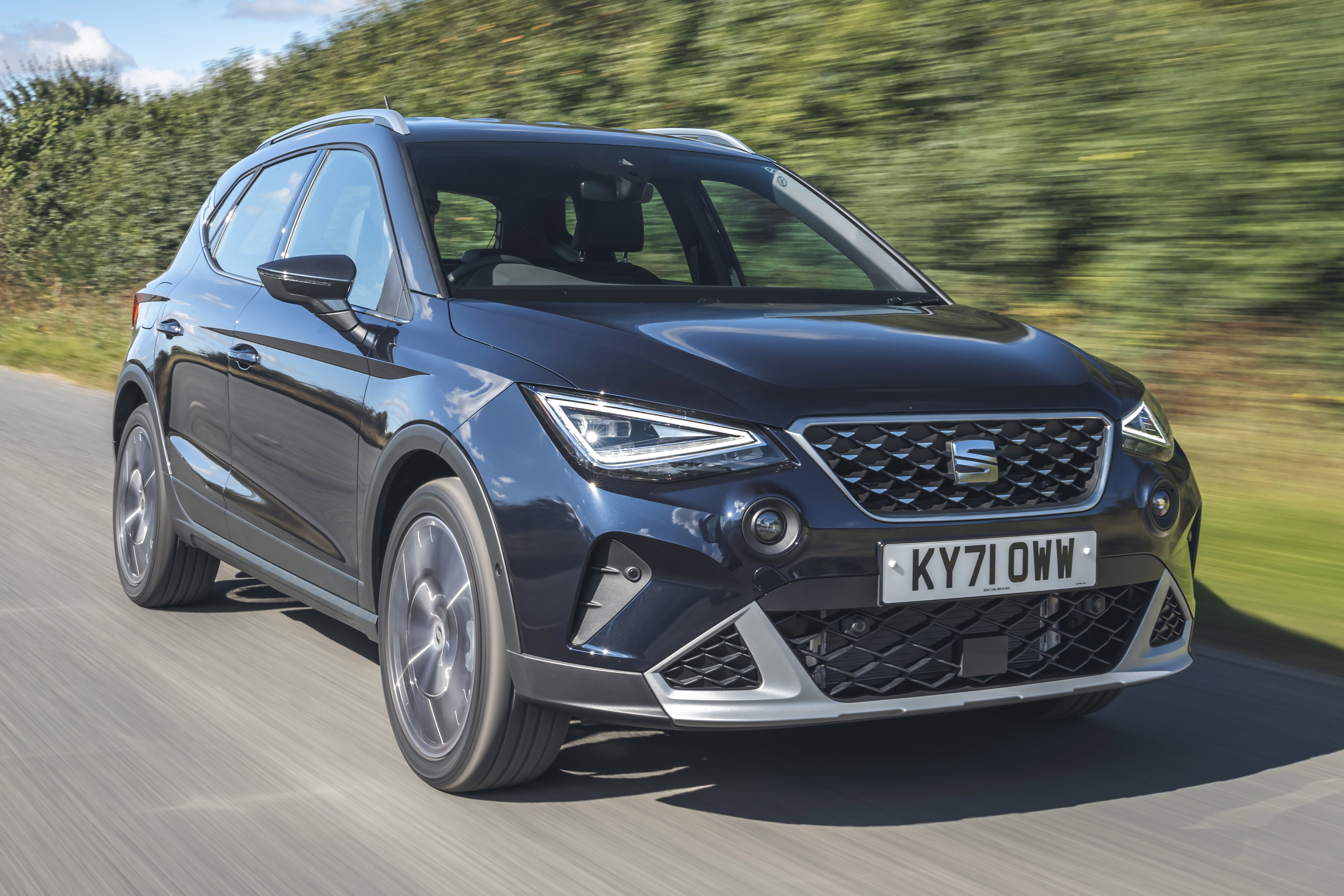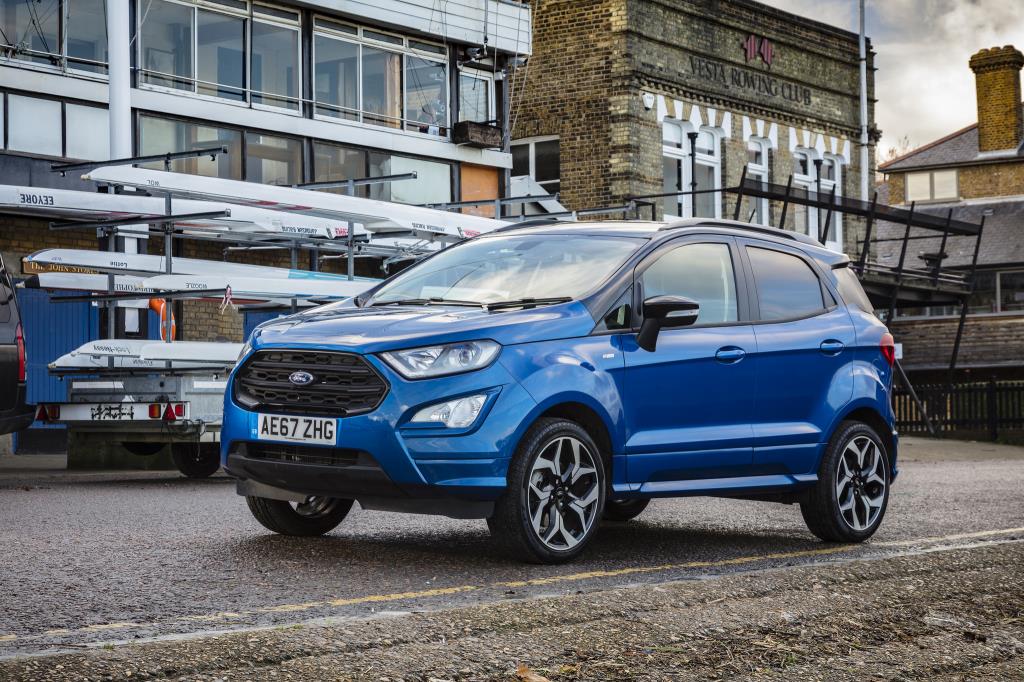Peugeot 2008 (2013-2019) Review
Written by Andrew Brady
Quick overview
Pros
- Looks smart and is well equipped
- Practical and comfortable
- Excellent Puretech petrol engines
Cons
- Pre-facelift petrol engines a bit weak
- Unusual driving position
- Average to drive
Overall verdict on the Peugeot 2008
"In this Peugeot 2008 review we are looking back at another contender in the small SUV segment, one which Peugeot was quick to enter following the success of the Nissan Juke. Combining good practicality and ease of use with enough SUV design cues to turn heads, the Peugeot 2008 was a modest success, and it's even better value in used form."
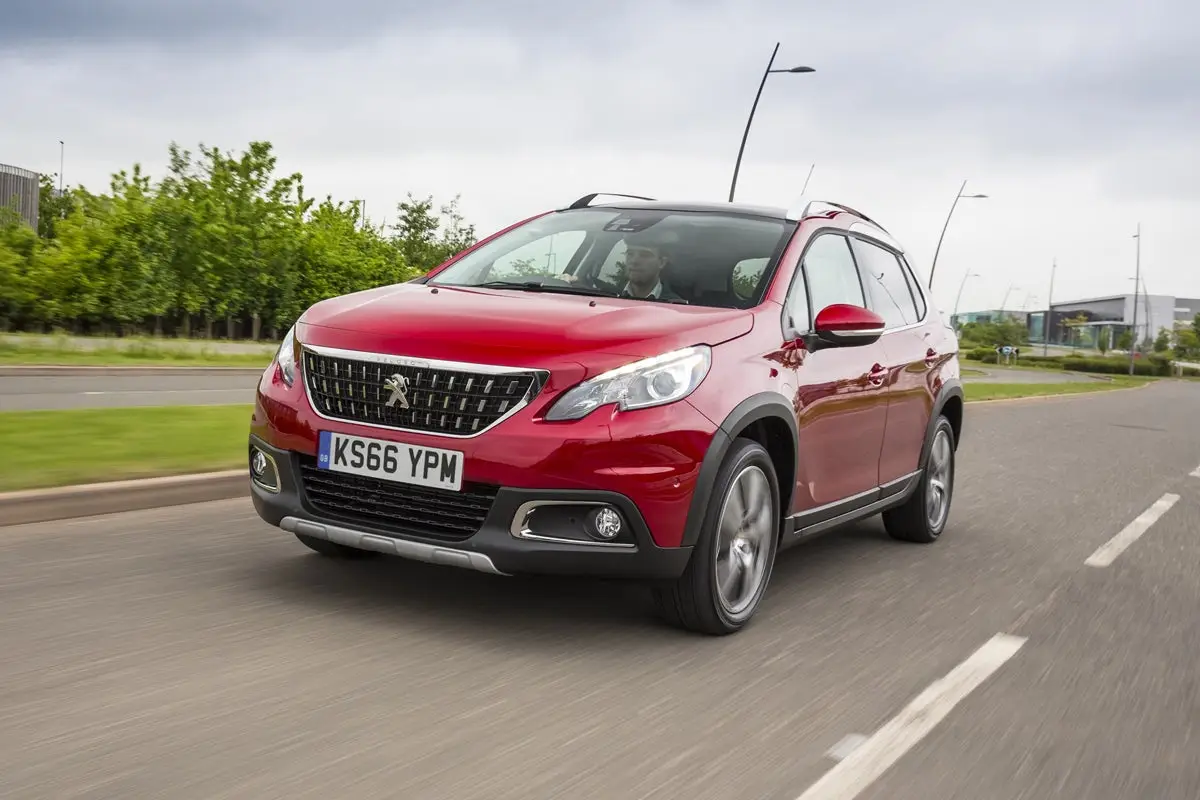
The original Peugeot 2008 was Peugeot's answer to the pioneering Nissan Juke SUV crossover, as well as its perennially successful countryman, the Renault Captur. Following the small SUV formula faithfully, it was derived from the Peugeot 208, with a chunkier body, tough-look plastic cladding, a taller ride height, a slightly roomier interior and, yes, higher prices. It's now been replaced by an all-new model that was launched in 2020.
Buyers flocked to it, as they have done for many models in this sector. In Peugeot's favour were pretty lines that echoed the similarly stylish 208, plus an interior that was more family-friendly than the low-slung hatchback. It was a surprisingly effective stepping stone between the 208 and 308 – or, more likely, the Peugeot 3008, its larger crossover sibling.
Although it arrived much later than the Nissan Juke – not until 2013 – the Peugeot seemed to benefit from the extra time and consideration that went into its design. Take the light, airy interior, decent passenger space in the back and – the kicker – a boot as practical and flexible as the Juke’s was awkward and small.
Interior design was interesting, too. Peugeot’s novel i-Cockpit uses a tiny steering wheel instead of a normal-sized one, instruments mounted high above in a wide console (which you could have illuminated by an LED strip). The appearance was improved by a facelift in 2016 – spot these cars by their bigger, more stylish front grille on upper-grade variants, with the Peugeot badge mounted in the centre, rather than on the bonnet.
To drive, it’s standard Peugeot, although the ride and handling weren’t quite as good as we’ve become accustomed to. The Peugeot 2008 benefitted from extra suspension travel compared with the 208, but it didn’t seem to ride all that much better. However, Peugeot did make good use of this with a ‘Grip Control’ variant, using a clever electronic differential that delivered extra traction on muddy roads. All-season tyres were also standard – so it’s worth looking out for these cars. They are very good winter-weather machines.
Early Peugeot 2008s had OK engines, but we prefer the Puretech motors introduced when it was facelifted in 2016. These tiny turbocharged petrol engines are smooth, punchy and very efficient, making them great all-rounders that work especially well in the Peugeot 2008. They’re easier to drive and more appealing than the earlier VTi engines, which needed revving to give their best.
Peugeot’s reputation for making strong diesel engines was also in evidence here, although cars of this size don’t generally sell well with diesel power. If you can find one on the used market, it’s an interesting option, but we’d probably future-proof ourselves by going for a Puretech petrol instead.
Although it’s a small SUV, Peugeot did sell the Peugeot 2008 with an automatic gearbox. Be acronym-savvy, though - the earlier ECG unit was terrible. Far superior is the post-facelift EAT6. The difference might not sound much, but it’s vast.
Today, the Peugeot 2008’s appeal is further enhanced by affordable used prices. As we’re about to see, it’s a car with a broad range of abilities. Let’s present the case for why you might want one as your next car.
If you're looking for the newer version, you need our Peugeot 2008 review.
Is the Peugeot 2008 right for you?
After the Nissan Juke established this sector, the floodgates were opened. It’s a class of car that seems to suit so many: the vehicles are more practical than the hatchbacks they’re based on – and cooler-looking – but they’re not as dull or expensive as a larger family hatchback. They’re perfect for small families.
Also working in the Peugeot 2008’s favour is cheery styling that still looks smart and distinctive. It’s a car that’s ageing well, which is good news for used car buyers, who can spend their money safe in the knowledge they won’t own something that looks dated.
Even the interior still feels sophisticated, with most models boasting a colourful central touchscreen and stylish centre console. The seats are nicely upholstered and some models come with a panoramic glass roof to make the cabin yet more welcoming.
What’s the best used Peugeot 2008 model/engine to choose
We’re going to recommend you go for a post-facelift Peugeot 2008, with one of the excellent 1.2-litre Puretech engines. These turbocharged motors perform well, offer good pulling power without the constant gearchanging required in VTi engines, and deliver good fuel economy if you don’t chase the redline. The diesels are good too, but petrol power suits the Peugeot 2008 better.
The Peugeot 2008 is also best with a reasonable level of equipment. Basic Access models feel a bit austere. We really like Allure, as it has a lot of luxuries, and are also drawn to top-spec Feline. This has indulgences such as leather upholstery and a panoramic glass roof.
What other cars are similar to the Peugeot 2008?
We’ve mentioned two Peugeot 2008 rivals, the sector-defining Nissan Juke and the car’s perennial arch-rival, the Renault Captur.
Other alternatives have come thick and fast in recent years, including the stylish SEAT Arona, fun to drive Mazda CX-3, nicely equipped Ford Ecosport, uninspiring Vauxhall Mokka X and practical Crossland X, plus curios such as the Suzuki SX4 S-Cross.
Good value options include the Hyundai Kona and Kia Stonic, while Citroen belatedly got in on the act in 2018 with the C3 Aircross.
Comfort and design: Peugeot 2008 interior
"The interior of the Peugeot 2008 will feel novel at first. Unlike the smaller 208, occupants step up slightly into it, making access easier – you can slide across the seats rather than dropping down into them. Then you’ll notice the ultra-small steering wheel and instruments located high up on the dashboard, with a large clear space in between. This is Peugeot’s i-Cockpit layout and it takes a bit of getting used to. You stare at the instruments above the steering wheel, rather than through it."
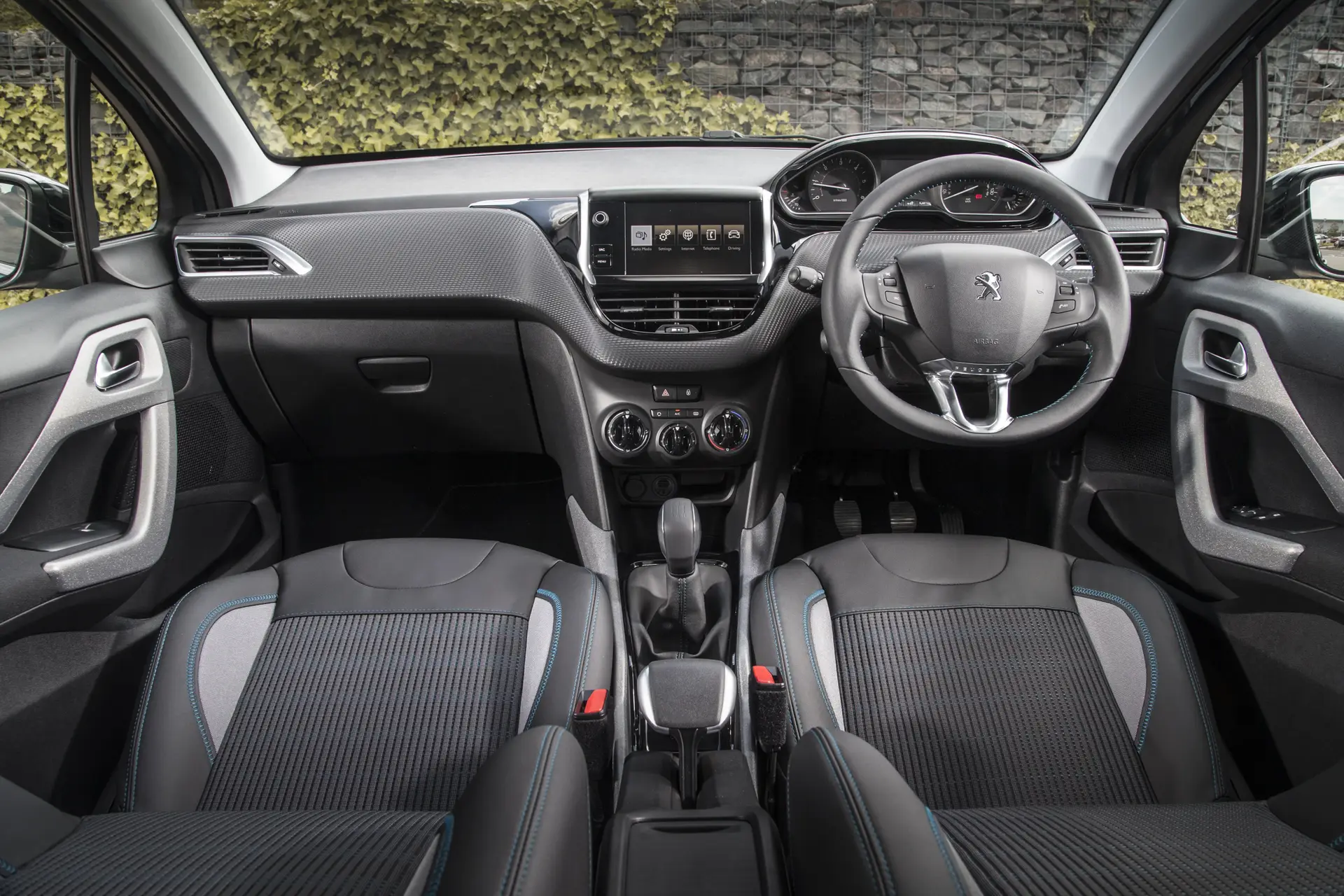
You will get used to it, but it does initially seem unusual. You’ll try to raise the steering wheel up (it’s both height and reach adjustable), but find it won’t go as high as you expect. Spend a little time perfecting the driving position for Peugeot’s new normal before you set off.
When you do so, a comfortable and nicely designed cabin is yours to enjoy. It still looks fairly modern, with most models coming with a centrally-located touchscreen mounted high up, with elegant heater controls below. The instruments are nicely designed (some models come with an illuminated LED surround) and the smooth curves of the interior design are soothing – it’s not a ‘noisy’ design.
Peugeot trims it in some very premium-looking colour schemes, too. Nice details include the metal door handles and chrome highlights on some of the controls.
Quality and finish
The Peugeot 2008 isn’t a premium car, but it’s pretty well finished for a mainstream model. The top half of the dashboard seems good quality, and smart use of polished trim panels adds an upmarket effect. Lower down, there are harder plastics, and the door panels are rather plasticky and scratchy – particularly as they have a flat, expansive design. At least the armrests are well padded, so it won’t feel too cheap once you’re in place.
Peugeot has designs on being one of the more upmarket mainstream makers and the overall look of the Peugeot 2008 bears this out. That’s particularly true after 2016, when a small facelift gave all models a leather steering wheel and handbrake lever.
It’s smartly finished on the outside, with LED rear lights and a classy grille at the front. It’s not quite premium-grade – the slightly hollow noise of the door when it’s closed bears this out – but it’s pretty decent, especially given how cheap and plasticky Peugeots of old were.
Infotainment: Touchscreen, USB, nav and stereo in the Peugeot 2008
Basic Peugeot 2008s don’t get much in the way of infotainment – just a humdrum stereo plonked on top of the dashboard in full view of everyone. It’s a bit like showing off to your mates that you’ve bought a radio from the 1990s and are fitting it to your brand new car. It just doesn’t look right.
Bypass the basic Access models and the touchscreen the Peugeot 2008 was designed to feature comes as standard. This has a crisp and bright display, so it looks good and is easy to read for everyone on board. It’s not that straightforward for the driver to use, though, and it’s also a bit laggy at times – you press it, then wait a second or so for it to react. Bluetooth, DAB radio and a USB socket all feature, along with a basic form of smartphone remote access.
By 2016, the infotainment system also had Apple CarPlay and Android Auto connectivity as standard, making it even easier to control your smartphone. This compensated for the fact only range-topping Peugeot 2008s came with sat-nav. It was an option on other models that, by 2016, few took up. Many post-2016 cars also had a reversing camera built into the touchscreen.
Space and practicality: Peugeot 2008 boot space
The Peugeot 2008 suffers a little from the familiar small Peugeot trait of having slightly cramped, closely-positioned pedals. The broad range of steering wheel reach adjustment means taller drivers can still get comfortable, but it does make finding the perfect driving position a bit involved.
The seats are comfortable, with a nice amount of bolstering, and both front-seat occupants enjoy a commanding feel thanks to the raised ride height. There are some interesting multi-material upholstery choices on posher versions.
The Peugeot 2008 doesn’t have a normal handbrake. Instead, there’s a style-over-substance flat, space-saving lever, with the button on the underside. It’s not very nice to use, as it’s fiddly and some find it rather heavy. The lever is too short and even trimming it in leather from 2016 doesn’t make it any more practical.
Space is pretty good in the rear, it’s definitely a step up over a Peugeot 208. There’s more headroom, the seat itself is fairly comfortable (although, unlike some rivals, it doesn’t slide back and forth) and legroom isn’t bad. The proviso is that those in the front need to compromise a little for taller people, particularly drivers who may have slid the seat back to allow for the pedal position. They may need to get used to driving with their knees slightly splayed.
The 360-litre boot is a good size. This makes it almost as roomy as a larger family hatchback, and much larger than the 208’s boot. It’s fairly wide and deep, so awkwardly-shaped loads won’t be a problem. A folded-up pushchair will go in easily. The near-flat load lip is also convenient – and it’s low off the ground, making it easier to load heavy items. With the seat folded, boot space extends to 1,400 litres, which again is impressive.
As for child seats, the Peugeot 2008 has ISOFIX mountings as standard on the outer two rear seats. There’s no ISOFIX fitting in the front, though, and it doesn’t have an airbag cut-off switch as standard.
The Peugeot 2008 dimensions are 4159mm long, 2004mm wide and 1556mm tall.
Handling and ride quality: What is the Peugeot 2008 like to drive?
"The Peugeot 2008 isn’t class-leading in terms of ride and handling. Ride quality is rather unsettled, jiggling and pattering over uneven surfaces and feeling a bit too lively when travelling quickly. And it’s worse on models with larger 17-inch wheels, despite the extra suspension travel it has over a regular car."
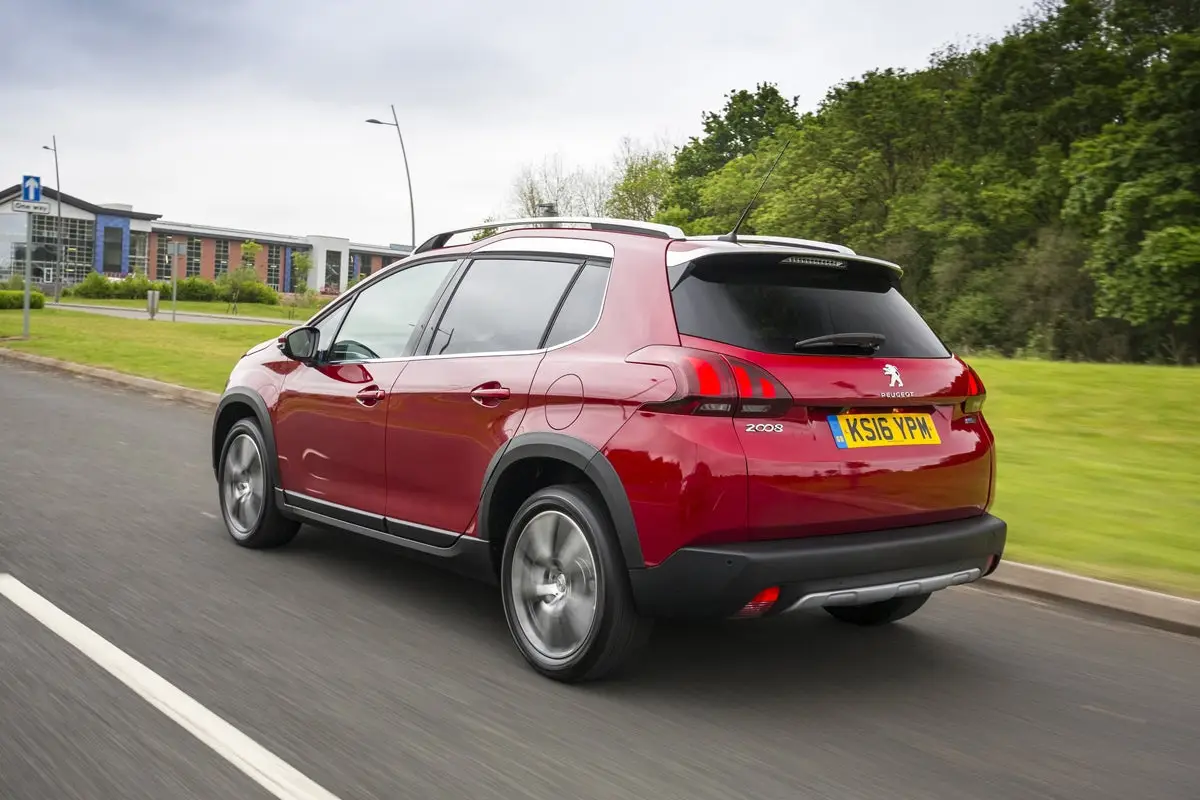
Handling is only average, too. The light, fast steering takes some getting used to, and its darty nature isn’t helped by a lack of feel through the tiny wheel. The Peugeot 2008 has a little too much body-roll when cornering quickly, and tackling a series of bends isn’t the most stable or certain of experiences. It’s a car best suited to smooth roads.
Peugeot did, in fairness, improve things with the 2016 update. These cars feel a bit more settled and intuitive – perhaps the newer, lighter Puretech engines help – and are nicer overall to drive.
You’ll find some Peugeot 2008s fitted with a system called Grip Control. This gives extra traction in slippery conditions through the use of all-season tyres and a clever electronic differential. A rotary dial in the centre console gives a choice of five modes, a bit like Land Rover Terrain Response. It’s a surprisingly effective system, without the expense or fuel economy penalty of all-wheel drive.
What engines and gearboxes are available in the Peugeot 2008?
The older VTi petrol engines feel a bit dated these days. They don’t have turbochargers so need a bit of noisy revving to give their best. If you’re buying an earlier Peugeot 2008, you might be better off with one of the diesels, ideally a 1.6-litre e-HDi. With up to 115PS, these were decent performers, with plenty of in-gear oomph.
Puretech petrol engines are best. These are all turbocharged, and produce either 82PS, 110PS or a fruity 130PS. This 1.2-litre three-cylinder engine is a gem, with a really smooth nature and plenty in reserve – even the 82PS version pulls well through the gears. With the ever-growing preference for petrol, we’d definitely recommend them.
You can also have the Puretech with an automatic gearbox, called EAT6. If you want an auto, go for this one. The early ECG ’box, which used an automated manual system, was awful – the later gearbox is much smoother.
Diesel engines from the facelift were based around a new, improved 1.5-litre BlueHDi, producing 100PS or 120PS. This engine is taken from the larger Peugeot 308 and is a strong and muscular performer, giving the Peugeot 2008 very long legs. If you’re planning to cover high miles and want something effortless, go for one of these.
Manual Peugeot 2008s have a somewhat vague gearbox, although it’s light and easy enough to use, and the clutch isn’t too heavy. It’s not memorable, but does feel effortless.
Refinement and noise levels
Refinement depends on which model you choose. The early petrol engines are louder and gruffer. And as they have to be revved harder, they become more intrusive the faster you go. Diesels are a bit droney too – the BlueHDi engines are better than the e-HDi versions, but it’s still hard to disguise that diesel noise in a car this small.
Puretech petrol engines are much quieter. They don’t have to be worked as hard and the smooth throb of the 1.2-litre turbo is nicer to listen to. Even the fact they vibrate less adds to the refinement – there’s an appreciable improvement versus earlier models.
The slightly bumpy ride of the Peugeot 2008 is echoed by a bit too much road noise. It’s chattery over bumps, and 17-inch tyres generate a bit of roar at speed. Wind noise is reasonable, though – the little quarterlights next to the door mirrors seem to help, although you may find the cabin is a bit noisier if you choose the panoramic glass sunroof.
Safety equipment: How safe is the Peugeot 2008?
Euro NCAP assessed the Peugeot 2008 back in 2013, when it scored a full five-star rating. It was awarded 88 percent for adult occupant protection, 77 percent for child protection, and a strong duo of 72 percent for pedestrian safety and 70 percent for safety assist. Those are impressive figures for the time, particularly given that the Peugeot 2008 is a more affordable car.
It lacks knee airbags in the front, but has driver, passenger and side airbags. Head airbags also extend to the rear, although it’s a shame the seatbelt reminders are only for the front seats – odd in a family-focused car, as it would be nice to know the kids are belted up at a glance. Stability control is standard, and the (also standard) cruise control includes a speed limiter. You can switch between the two at the flick of a rotary control.
Facelifted post-2016 Peugeot 2008s had an extra piece of tech – autonomous emergency braking. This uses a sensor mounted on the windscreen to scan the road ahead. When it detects a potential crash, it sounds a warning to the driver and, if they don’t respond, will automatically apply the brakes. If it doesn’t avoid the collision entirely, it will certainly reduce the impact.
MPG and fuel costs: What does a Peugeot 2008 cost to run?
"Nearly every used Peugeot 2008 is fuel-efficient, with early exceptions being the 1.6-litre VTi 120 petrol engine – one of the few to drop below 50mpg. The 1.2-litre VTi engines claimed high-50s MPG, and most of the diesels did over 75mpg, although the proviso here is that all figures are measured using the older, less realistic NEDC economy test."
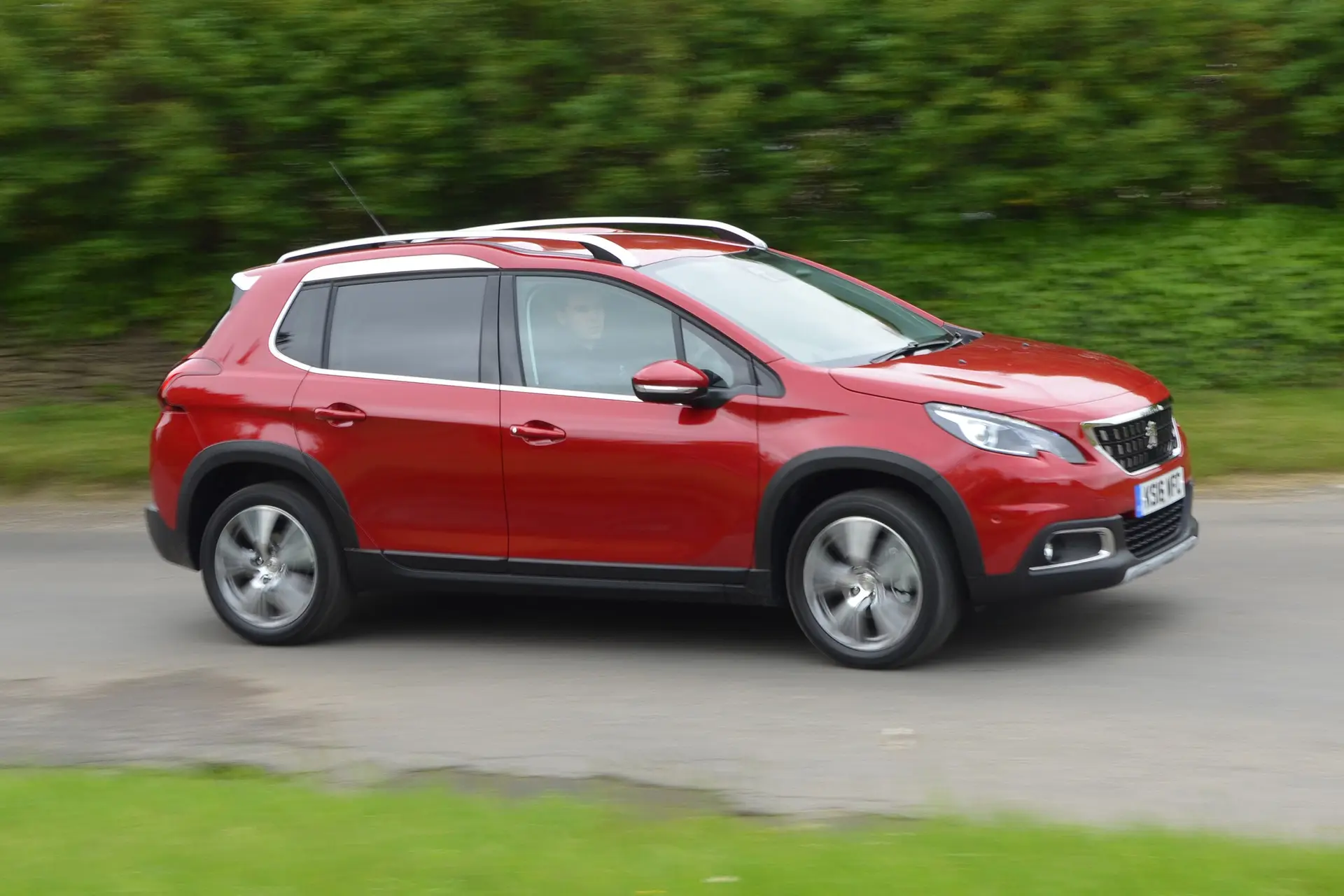
The brilliant Puretech engines were even more fuel-efficient, both on paper and, thanks to the fact they have more in reserve, probably in the real world as well. A 1.2-litre Puretech 82 is rated at 64.2mpg and even the powerful 130PS version offers nearly 59mpg. Most used Peugeot 2008s, particularly 2016-on models, are fitted with a start-stop system to save fuel in traffic.
How reliable is a Peugeot 2008?
The Peugeot 2008 scored a respectable 9.26 out of 10 for reliability in the HonestJohn.co.uk Satisfaction Survey, which makes it one of the better-performing Peugeots. It has also been recalled for issues related to fuel leaks and front suspension, so it is worth making sure rectification work has been carried out if required.
As a brand Peugeot finished a lowly 24th out of 30 manufacturers in the same survey, but at least you can feel relatively confident that the Peugeot 2008 is one of its better models.
Insurance groups and costs
A used Peugeot 2008 should be a cost-effective car to insure. An early base-spec 1.2-litre Active drops into group nine (out of 50), and even the later, more powerful Puretech version is in group 11. The choice 1.2-litre Allure is group 13 – but watch the jump up for diesels, with a 1.6-litre BlueHDi 100 coming in at group 19.
Oh, and if you like the extra performance of the 1.2-litre Puretech 130, be prepared to pay more to insure it. A GT Line version with this engine is in insurance group 24.
VED car tax: What is the annual road tax on a Peugeot 2008?
Puretech engines don’t quite drop into zero-rated VED (road tax) band, but they come close. Most will cost £20 a year for VED, and even the most powerful 130PS version is only £30 a year.
The earlier VTi engines emit more CO2, but still won’t be punitive until you start exploring the more powerful versions. Many diesel-engined Peugeot 2008s have free VED, particularly the BlueHDi versions. Thank double-figure CO2 emissions for that.
How much should you be paying for a used Peugeot 2008?
"For less than £6,000, it’s possible to pick up a 2014 Peugeot 2008 in prime Allure spec, with e-HDi diesel engines proving most popular at this level. There’s a good amount of choice, so you’ll have the pick of colours and specs."
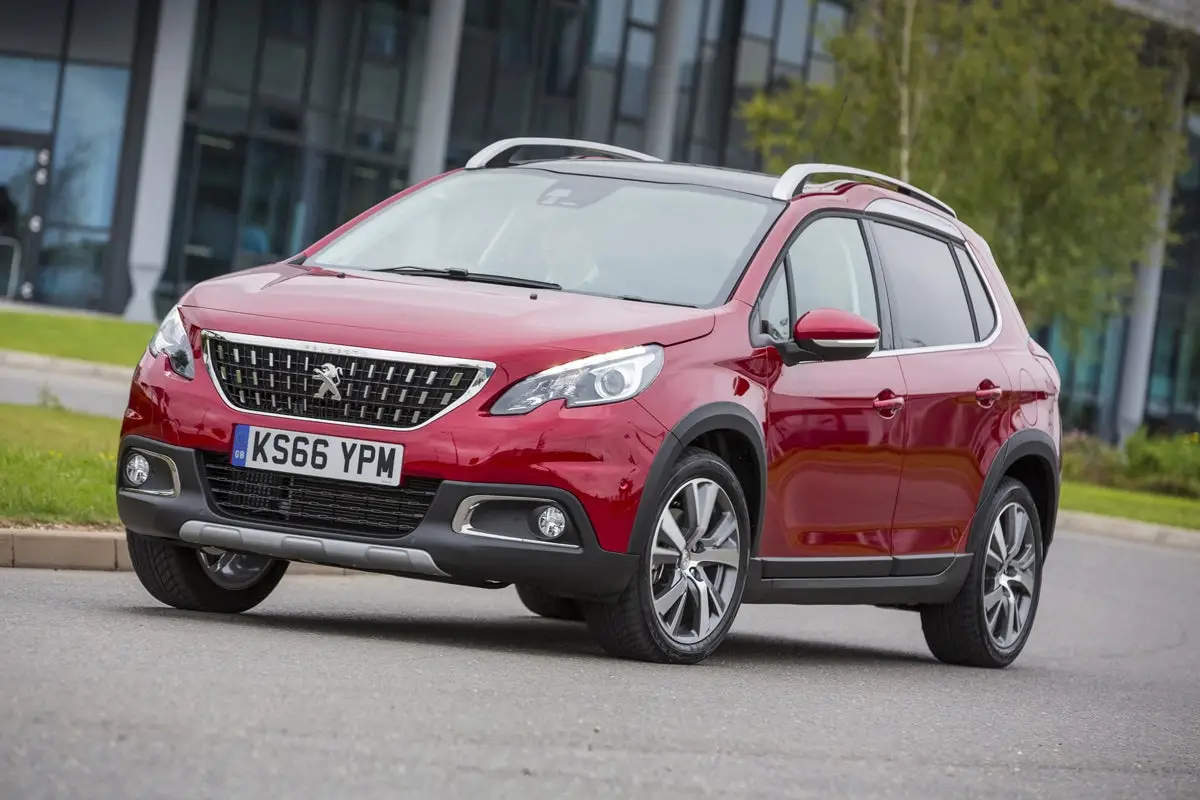
We rather prefer facelifted models, though – and the good news is you can find them for less than £8,000. If you’re prepared to put up with a base Active spec, little more than £7,000 will secure you a 2016 car.
For a £10,000 budget, look out for three-year-old models with low mileages, ideally from a Peugeot dealer so they come with a manufacturer-approved used car warranty.
Trim levels and standard equipment
Peugeot’s launch Peugeot 2008 range comprised Access+, Active, Allure and Feline. There was a clearly-graded step between them, which helped make things easier for new car buyers, and still helps today. The base Peugeot 2008 Access+ has steel wheels, but gets smart LED running lights, electric windows and door mirrors, remote locking and manual air-con.
the Peugeot 2008 Active is smarter, with 16-inch alloys, front fog lights and the all-important touchscreen system with Bluetooth, USB and DAB. The Peugeot 2008 Allure is the best all-rounder. It has dark-tint rear windows, dual-zone climate control, automatic lights and wipers, electric rear windows, parking sensors and a fancy LED instrument surround. The Peugeot 2008 Feline has 17-inch alloys, a panoramic glass roof, leather upholstery and sat-nav.
Things were broadly the same following the 2016 facelift. An added reason to go for the Peugeot 2008 Allure was the smart front grille and wheelarch extensions that now featured. Look out for Peugeot 2008 Allure Premium models, introduced in early 2018, which added Peugeot Connected 3D sat-nav with TomTom traffic updates, a panoramic glass roof, a rear spoiler, roof bars and front/rear scuff plates.
Ask the heycar experts: common questions
Is the Peugeot 2008 a reliable car?
What problems does the Peugeot 2008 have?
Is the Peugeot 2008 a crossover or an SUV?
Stay up to speed with great offers plus the latest car news and reviews
Keep me updated by email with the latest advice, news and offers from heycar.
By submitting you agree to our privacy policy

